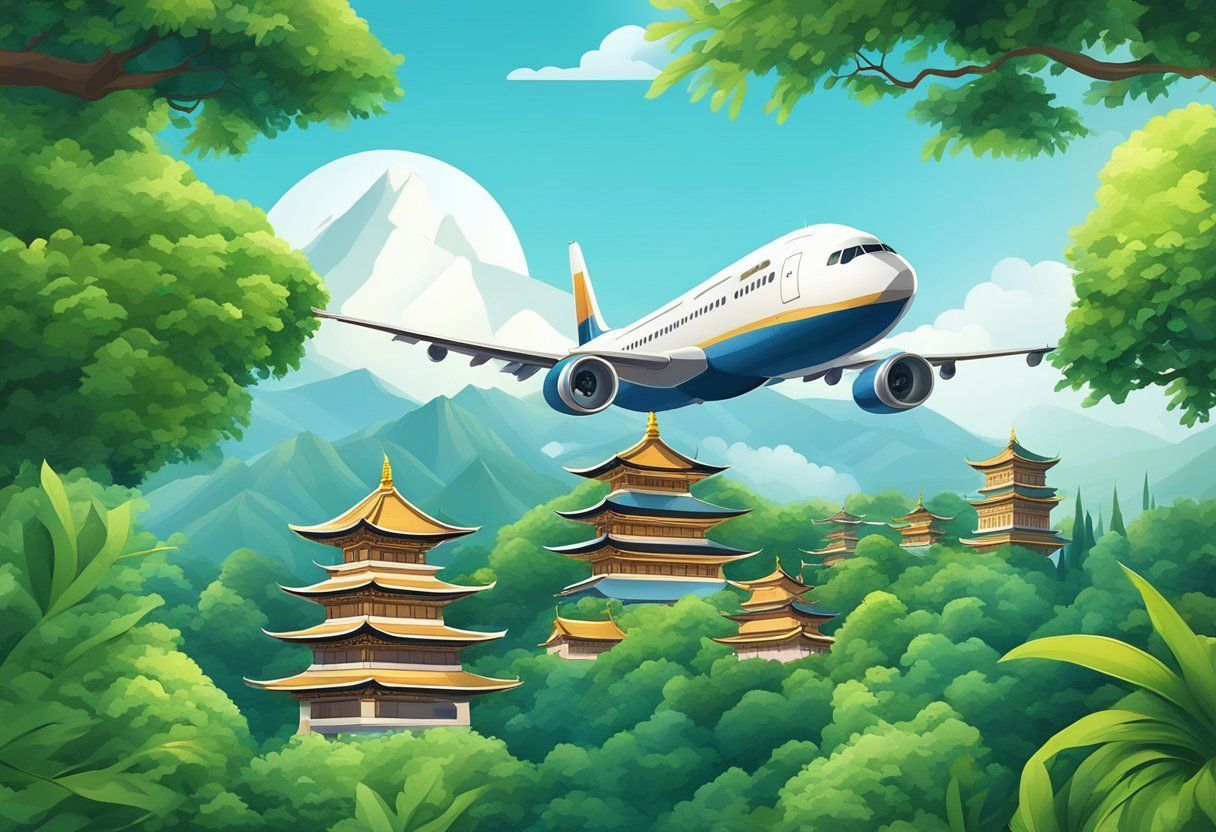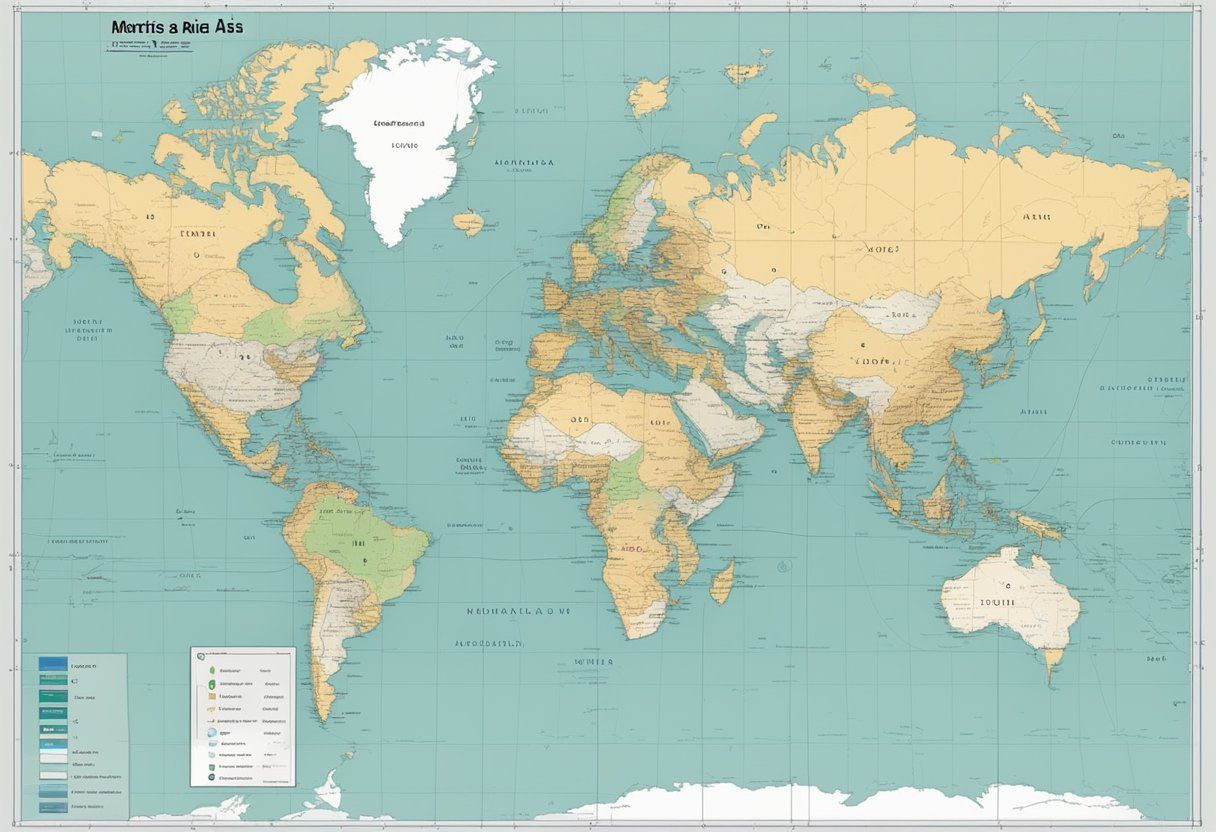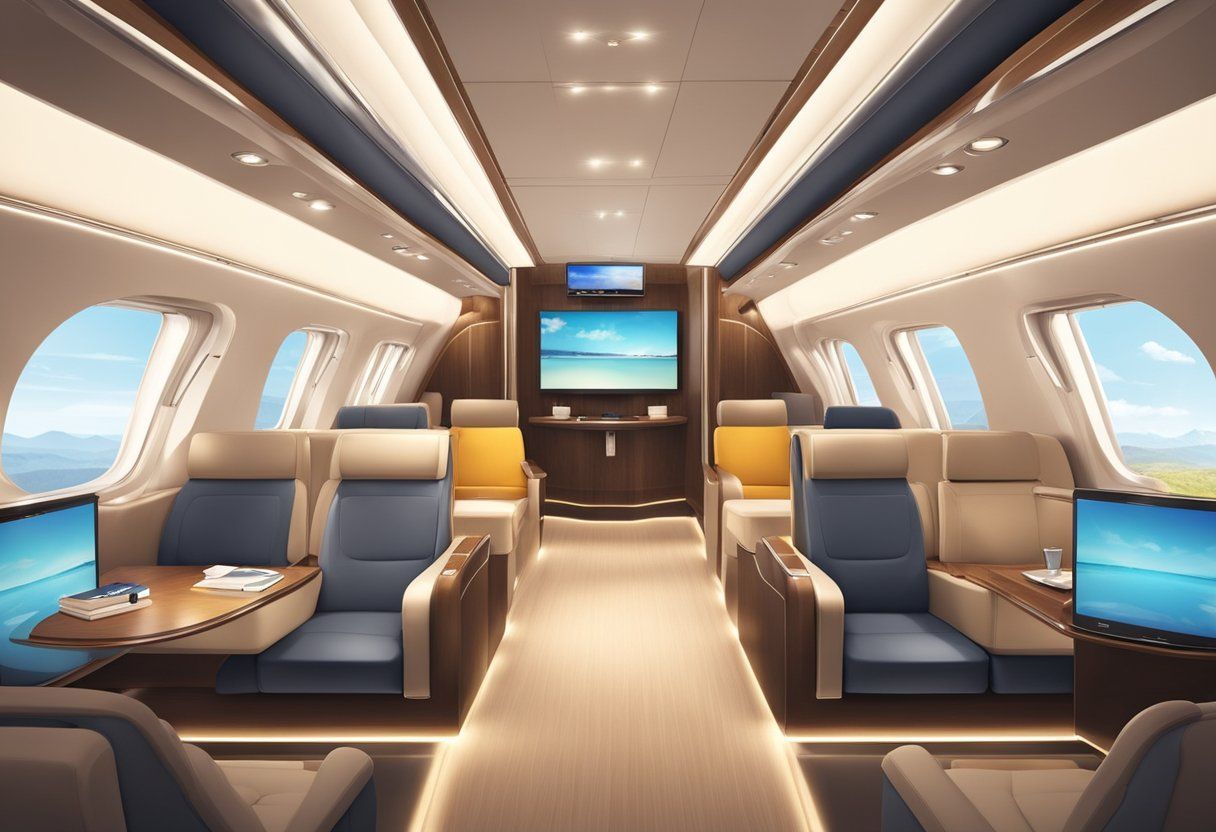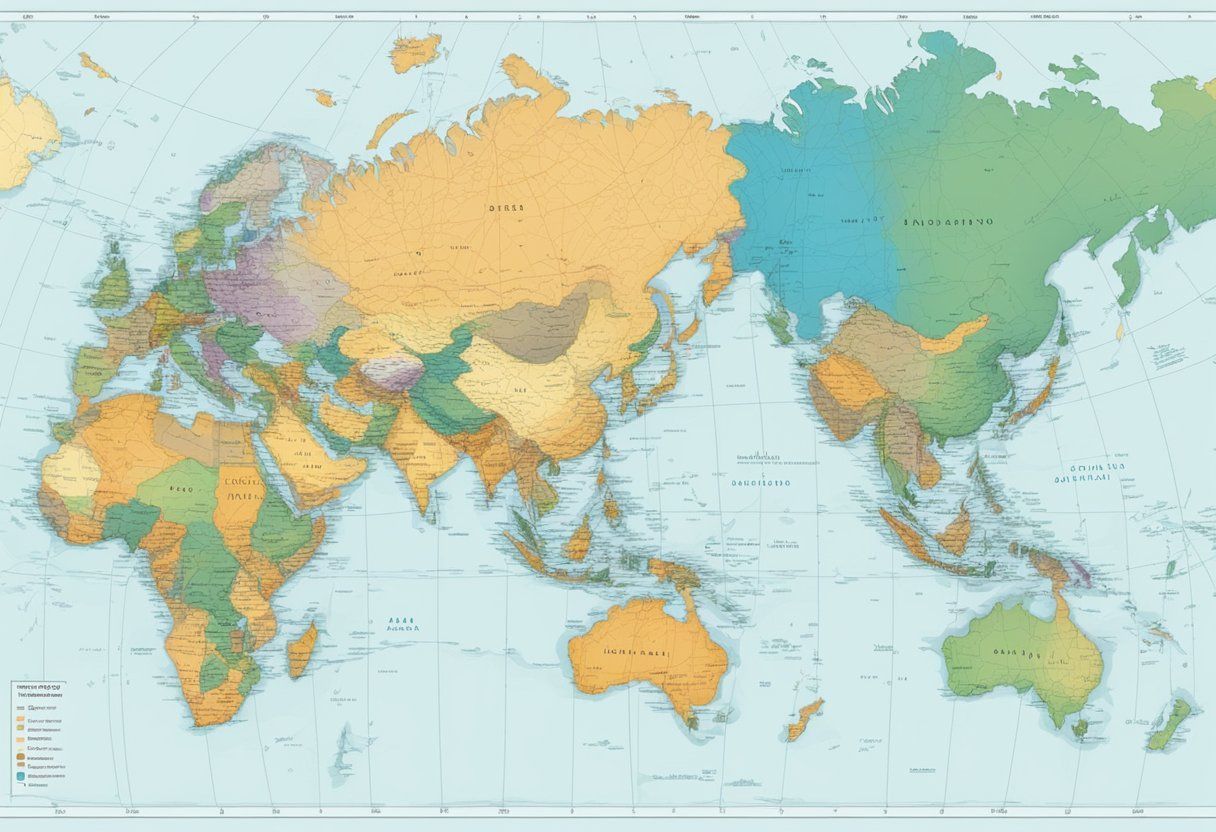Asia Awaits
Travelling to Asia offers a wealth of cultural experiences, breathtaking landscapes, and vibrant cities.
Choosing the right airline can make a significant difference in comfort and convenience for long-haul flights to this diverse continent.

Singapore Airlines, Emirates, and ANA (All Nippon Airways) consistently rank among the top carriers for flights to Asia, offering exceptional service, modern fleets, and extensive route networks.
These airlines provide travellers with comfortable seating, high-quality in-flight entertainment, and delicious meal options.
When selecting an airline for Asian travel, factors to consider include flight routes, layover times, baggage allowances, and loyalty programmes.
Comparing these aspects across different carriers can help travellers find the best fit for their specific needs and preferences.
Assessing Airline Performance Metrics

Key factors in evaluating airlines for travel to Asia include safety records, customer service quality, punctuality, and baggage handling efficiency.
These metrics provide valuable insights into the overall performance and reliability of carriers serving Asian routes.
Safety and Reliability
Safety is paramount when choosing an airline.
Top carriers operating in Asia maintain rigorous safety standards and undergo regular audits.
Many Asian airlines have excellent safety records, with some achieving perfect scores in international safety assessments.
Reliability encompasses factors such as flight cancellations and technical issues.
Airlines like Singapore Airlines and ANA have earned reputations for consistent performance and well-maintained fleets.
These carriers invest heavily in preventative maintenance and staff training to minimise disruptions.
Customer Service Standards
Asian airlines often excel in customer service, setting high benchmarks for the industry.
Carriers like Cathay Pacific and Japan Airlines are renowned for their attentive cabin crew and personalised service.
Many Asian airlines offer unique cultural touches, such as traditional greetings and cuisine.
Premium cabins on these carriers frequently feature amenities like lie-flat beds and gourmet meals prepared by renowned chefs.
Ground services also play a crucial role.
Leading airlines provide efficient check-in processes, luxurious lounges, and dedicated support for transit passengers.
On-Time Departures and Arrivals
Punctuality is a key performance indicator for airlines.
Carriers like Japan Airlines and EVA Air consistently rank among the world's most punctual airlines.
Factors affecting on-time performance include:
- Efficient turnaround times
- Effective scheduling
- Weather management
- Air traffic control coordination
Airlines serving busy hubs like Hong Kong and Singapore face unique challenges in maintaining punctuality.
Despite this, many achieve impressive on-time rates through careful planning and state-of-the-art operations management.
Baggage Handling Efficiency
Efficient baggage handling is crucial for a smooth travel experience.
Leading Asian airlines invest in advanced tracking systems and streamlined processes to minimise lost or delayed luggage.
Singapore Changi Airport, a major hub for several Asian carriers, boasts one of the world's most sophisticated baggage handling systems.
This technology benefits airlines operating through the airport, reducing mishandled baggage rates.
Some carriers offer innovative services like luggage delivery to hotels or homes, enhancing convenience for passengers.
Others provide real-time tracking apps, allowing travellers to monitor their baggage throughout the journey.
Comparing Cabin Comfort and Amenities

Airlines serving Asia offer a range of cabin features and amenities to enhance passenger comfort.
The options vary across economy, business, and first-class cabins, with differences in seating, entertainment, and connectivity.
Economy Class Features
Economy class on Asian routes has seen significant improvements.
Many airlines now provide ergonomic seats with adjustable headrests and increased legroom.
Some carriers, like Singapore Airlines and ANA, offer wider seats with extra pitch.
Seat-back screens are common, with sizes ranging from 9 to 13 inches.
USB ports and power outlets are increasingly standard, allowing passengers to keep devices charged throughout long-haul flights.
Airlines such as Cathay Pacific and Japan Airlines have introduced enhanced meal services, offering regional cuisines and special dietary options.
Business and First Class Upgrades
Business class on Asian routes often features lie-flat beds or suites with direct aisle access.
Emirates and Etihad Airways lead with their spacious business class offerings, including personal minibars and large entertainment screens.
First-class cabins take luxury to new heights.
Singapore Airlines' Suites Class provides a separate bed and armchair, while ANA's The Suite offers enclosed spaces with sliding doors.
Upgraded dining experiences are a hallmark of premium cabins.
Airlines like Qatar Airways and Thai Airways offer on-demand dining with restaurant-quality meals prepared by top chefs.
Inflight Entertainment and Connectivity
Modern inflight entertainment systems offer extensive libraries of films, TV shows, music, and games.
Emirates' ICE system boasts over 4,500 channels of content, while Singapore Airlines' KrisWorld features new releases and classic favourites.
Wi-Fi connectivity is becoming ubiquitous, with airlines like JAL and Korean Air offering high-speed internet access.
Some carriers provide complimentary Wi-Fi in premium cabins or for frequent flyer members.
Live television and real-time flight tracking are additional features on many Asian carriers.
Qatar Airways offers Oryx One, which includes live TV channels and a dedicated children's entertainment section.
Analyzing Frequent Flyer Programs
Frequent flyer programmes play a crucial role in choosing airlines for travel to Asia.
These loyalty schemes offer various benefits that can enhance the travel experience and provide value for money.
Miles Accrual and Redemption
Airlines operating in Asia typically offer miles accrual based on the distance flown or ticket price.
Singapore Airlines' KrisFlyer programme allows members to earn miles on flights, hotel stays, and credit card spending.
These miles can be redeemed for flights, upgrades, or hotel stays.
Cathay Pacific's Asia Miles programme offers flexible redemption options, including flights on partner airlines and lifestyle rewards.
Members can earn miles through flying, credit card spending, and shopping with programme partners.
Japan Airlines' Mileage Bank provides competitive earning rates and allows redemption on oneworld alliance partners.
The programme offers good value for long-haul flights and premium cabin upgrades.
Alliance Benefits and Partnerships
Many Asian airlines are part of global alliances, offering expanded benefits to frequent flyers.
Star Alliance, which includes Singapore Airlines, Thai Airways, and ANA, provides access to over 1,300 airports worldwide.
oneworld, featuring Cathay Pacific, Japan Airlines, and Malaysia Airlines, offers reciprocal lounge access and priority check-in for elite members.
SkyTeam, with Korean Air and China Airlines, provides similar benefits across its network.
These alliances enable travellers to earn and redeem miles across multiple airlines, enhancing the value of their frequent flyer memberships.
Partner airlines often offer additional earning and redemption opportunities, expanding travel options.
Elite Status Advantages
Elite status in Asian airline programmes can significantly improve the travel experience.
Singapore Airlines' PPS Club offers priority check-in, extra baggage allowance, and guaranteed Economy Class seats on sold-out flights.
Cathay Pacific's Marco Polo Club provides tiered benefits, including lounge access, priority boarding, and bonus miles.
Higher tiers offer more exclusive perks, such as First Class lounge access and guaranteed Economy seats.
ANA's Mileage Club elite members enjoy priority security lanes, complimentary seat upgrades, and waived change fees.
These benefits can make travel more comfortable and convenient, especially for frequent flyers to Asia.
Reviewing Route Networks and Destinations

Asian airlines offer extensive networks connecting major cities across the continent and beyond.
Their expanding routes provide travellers with diverse options for reaching destinations throughout Asia.
Major Hubs and Connectivity
Singapore Airlines utilises Changi Airport as its primary hub, offering connections to over 60 destinations in Asia.
The carrier's network spans key cities like Tokyo, Seoul, and Bangkok.
Hong Kong-based Cathay Pacific operates from Hong Kong International Airport, serving more than 50 Asian destinations.
All Nippon Airways (ANA) connects travellers through its Tokyo hubs at Narita and Haneda airports.
The airline covers major Japanese cities and provides links to other Asian countries.
Korean Air's main hub at Incheon International Airport serves as a gateway to over 40 Asian destinations.
Emirates, though based in Dubai, offers extensive connectivity to Asian cities.
The airline's network includes popular destinations like Mumbai, Delhi, and Bangkok.
Route Expansion and New Markets
Airlines are continuously adding new routes to meet growing demand. In recent years, carriers have focused on expanding services to secondary cities in China and India.
Vietnam Airlines has increased flights to emerging markets in Southeast Asia, including Cambodia and Laos.
Japan Airlines (JAL) has strengthened its presence in Australia and New Zealand, adding flights to cities like Melbourne and Auckland.
Thai Airways has expanded its European network, connecting more Asian cities to destinations like Vienna and Brussels.
Low-cost carriers like AirAsia and Scoot have played a significant role in opening up new markets. These airlines have introduced routes to lesser-known destinations, making travel more accessible and affordable for budget-conscious travellers.










